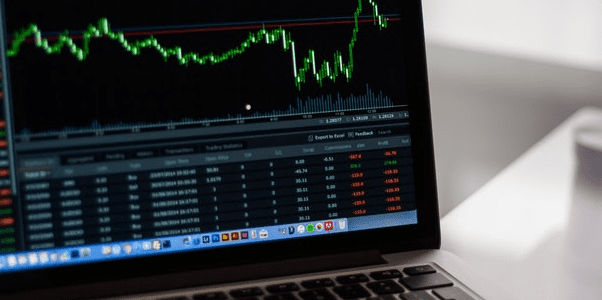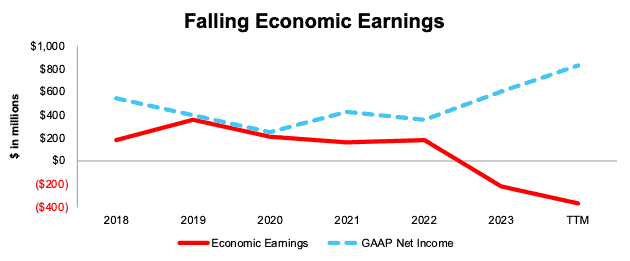With market melting down, now is time for real due diligence on stocks. Tough times get us just as excited as good times because we are prepared.
In our recent training, The AI-Powered Edge: Your 2025 Investment Playbook, we showed how our superior fundamental research gives investors an edge (you cannot get anywhere else) in any market.
Picking winners is only half the battle. Just blow up in your portfolio could wipe all your juicy 2024 gains. You do not have to take that risk. Let us prove it to you with a free stock pick.
Avoiding the big losers is exactly what our Most Dangerous Stocks Model Portfolio aims to help investors do. By understanding the true profits of a business, coupled with rigorous analysis of a stock’s valuation, this Model Portfolio identifies companies that are vastly overvalued and hold large downside risk. The results speak for themselves: the Most Dangerous Stocks Model Portfolio outperformed shorting the S&P 500 and Russell 2000 (combined) by 16% year-to-date through 3Q24.
Today, we’re giving you a free stock pick. We are sharing this month’s featured stock for our Most Dangerous Stocks Model Portfolio.
This feature provides a concise summary of how we pick stocks for this Model Portfolio. It is not a full Danger Zone report, but it gives you insight into the rigor of our research and approach to picking stocks. Whether you’re a subscriber or not, we think it is important that you’re able to see our research on stocks on a regular basis. We’re proud to share our work.
We update this Model Portfolio monthly. December’s Most Attractive and Most Dangerous stocks Model Portfolios were updated and published for clients on December 4, 2024.
Free Featured Stock: Xylem Inc. (XYL)
Xylem Inc. (XYL: $121/share) is the featured stock from December’s Most Dangerous Stocks Model Portfolio.
Xylem’s net operating profit after tax (NOPAT) margin fell from 12% in 2018 to 10% in the TTM while the company’s invested capital turns fell from 0.8 to 0.6 over the same time. Falling NOPAT margins and invested capital turns drive Xylem’s return on invested capital (ROIC) from 10% in 2018 to 6% in the TTM.
Xylem’s economic earnings, the true cash flows of the business, which take into account changes to the balance sheet, fell from $179 million in 2018 to -$370 million in the TTM. Meanwhile, the company’s GAAP net income rose from $549 million to $830 million over the same time. Whenever GAAP earnings rise while economic earnings decline, investors should beware.
Figure 1: Xylem’ Economic vs GAAP Earnings Since 2018
Sources: New Constructs, LLC and company filings
XYL Provides Poor Risk/Reward
Despite its poor and declining fundamentals, Xylem’s stock is priced for significant profit growth, and we believe the stock is overvalued.
To justify its current price of $121/share, Xylem must improve its NOPAT margin to 15% (equal to best-ever NOPAT margin) and grow revenue by 13% (compared to 8% over the last decade) compounded annually through 2033. In this scenario, Xylem grows NOPAT 18% compounded annually to $2.8 billion in 2033. We think these expectations are overly optimistic, especially considering the company’s NOPAT has grown just 6% compounded annually over the last five years.
Even if Xylem improves its NOPAT margin to 12% (above five-year average NOPAT margin of 11%) and grows revenue 10% compounded annually through 2033, the stock would be worth no more than $81/share today – a 33% downside to the current stock price.
Each of these scenarios also assumes Xylem can grow revenue, NOPAT, and FCF without increasing working capital or fixed assets. This assumption is unlikely but allows us to create best case scenarios that demonstrate the high expectations embedded in the current valuation.
Critical Details Found in Financial Filings by Our Robo-Analyst Technology
Below are specifics on the adjustments we made based on Robo-Analyst findings in Xylem’s 10-Qs and 10-Ks:
Income Statement: we made over $430 million in adjustments, with a net effect of removing over $130 million in non-operating expenses. Professional members can see all adjustments made to Xylem’s income statement on the GAAP Reconciliation tab on the Ratings page on our website.
Balance Sheet: we made over $6.3 billion in adjustments to calculate invested capital with a net decrease of over $4.0 billion. One of the most notable adjustments was for deferred tax assets. Professional members can see all adjustments made to Xylem’s balance sheet on the GAAP Reconciliation tab on the Ratings page on our website.
Valuation: we made around $3.8 billion in adjustments to shareholder value with a net decrease of over $2.6 billion. The most notable adjustment to shareholder value was for total debt. Professional members can see all adjustments to Xylem’s valuation on the GAAP Reconciliation tab on the Ratings page on our website.
This article was originally published on December 19, 2024.
Disclosure: David Trainer, Kyle Guske II, and Hakan Salt receive no compensation to write about any specific stock, style, or theme.
Questions on this report or others? Join our online community and connect with us directly.
[1] Our research utilizes our Core Earnings, a more reliable measure of profits, as proven in Core Earnings: New Data & Evidence, written by professors at Harvard Business School (HBS) & MIT Sloan and published in The Journal of Financial Economics.

